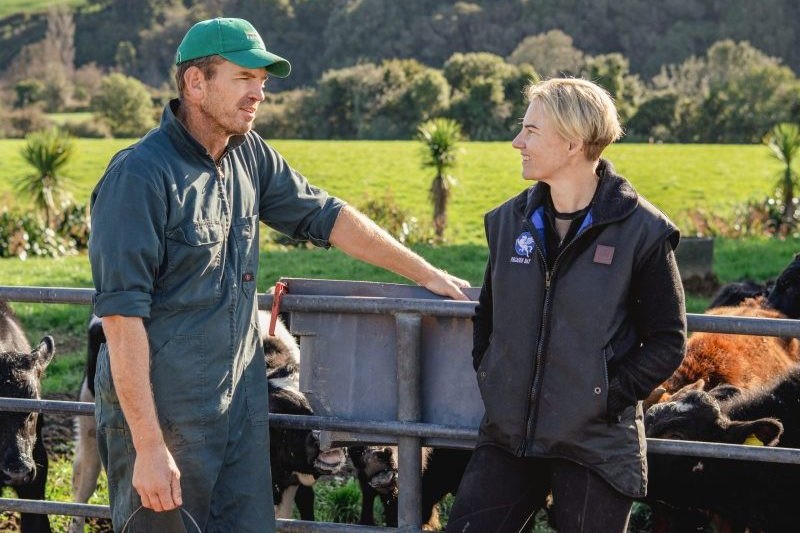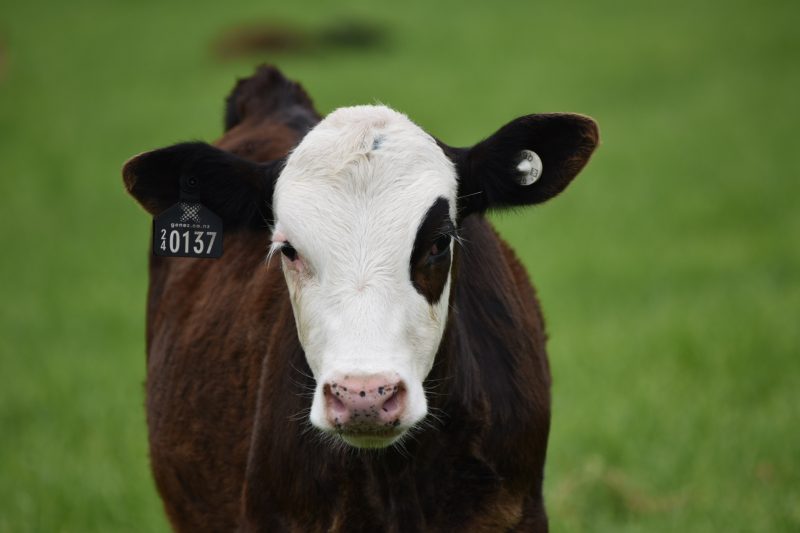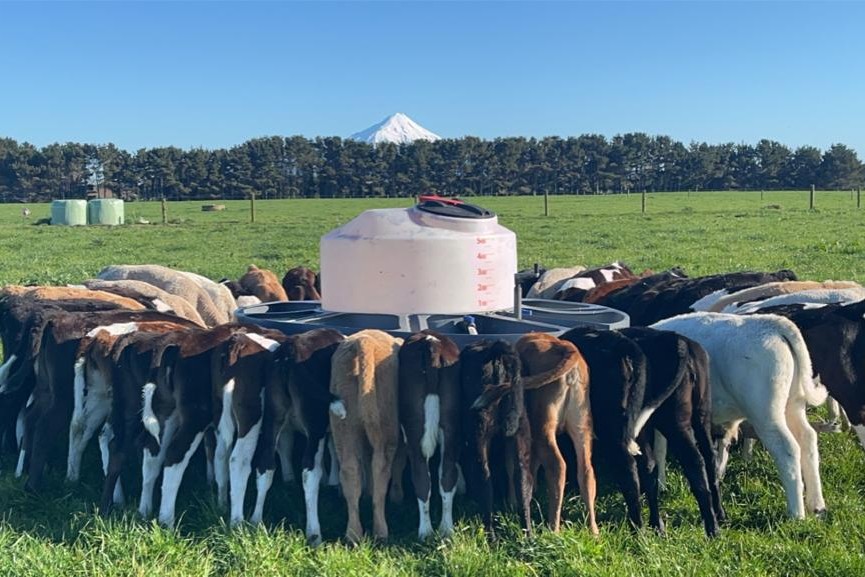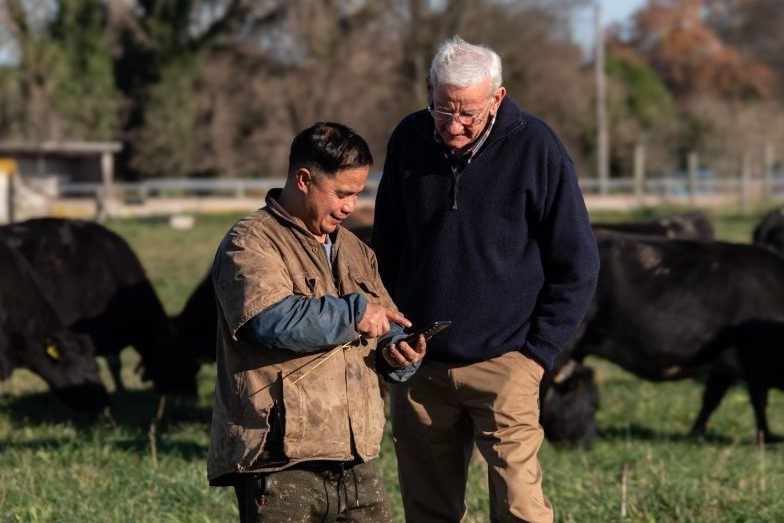What does rumination data really give us?
With wearable technology able to show us more information about rumination habits of our cows, what are we able to find out? Words Ian Lean, MD Scibus and Adjunct Professor, University of Sydney.
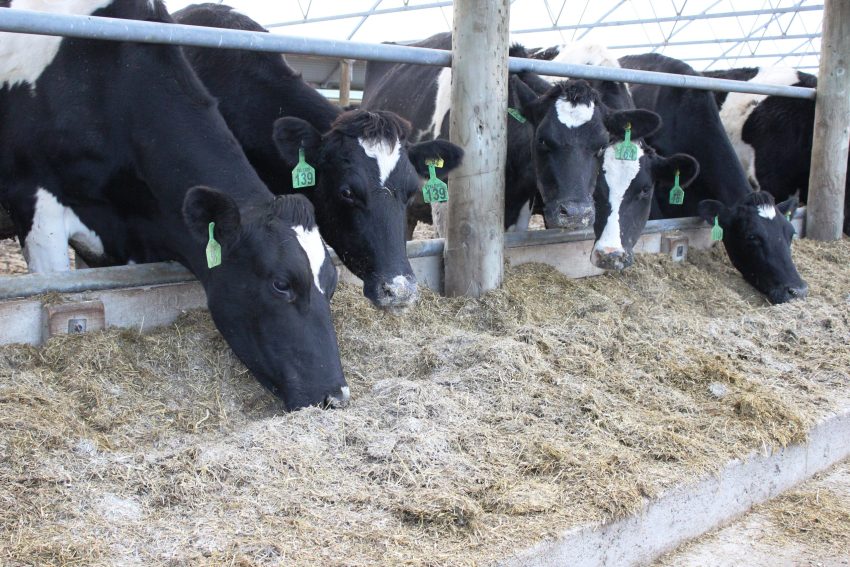
The ruminant industries are really in the business of growing bugs – the efficient production of protein from the rumen is pivotal to profit. The role of rumination is important in providing an ideal environment for the breakdown or escape from the rumen of carbohydrates and proteins and their reincorporation in the products of fermentation and microbial protein.
Cows that are well fed tend to relax and lie down, giving them time to ruminate and break down the fibre in pasture, allowing them to ultimately make best use of the feed. Excessive exercise and low feeding rates reduce rumination and milk production.
We now have real-time insights into rumination behaviour in cattle with the advent of wearable monitoring systems. There are at least eight monitoring systems that report rumination available in New Zealand and Australia. These involve installing collars, ear movement devices or intra-ruminal boluses. All wearables have strengths and weaknesses and vary greatly in price. Many provide significant advantages in managing reproduction.
The large number of devices suggests a strong need to be cautious about interpretation among herds using different devices.
Different feeding programmes ensure a need to be careful even among herds. Interpretation will be best applied to a specific farm and deviation away from the herd or cow mean will be the best metric for interpretation. This is more important when differences in breed (Holstein ruminate more than Jersey) and age (older cows ruminate more than first calvers) are considered.
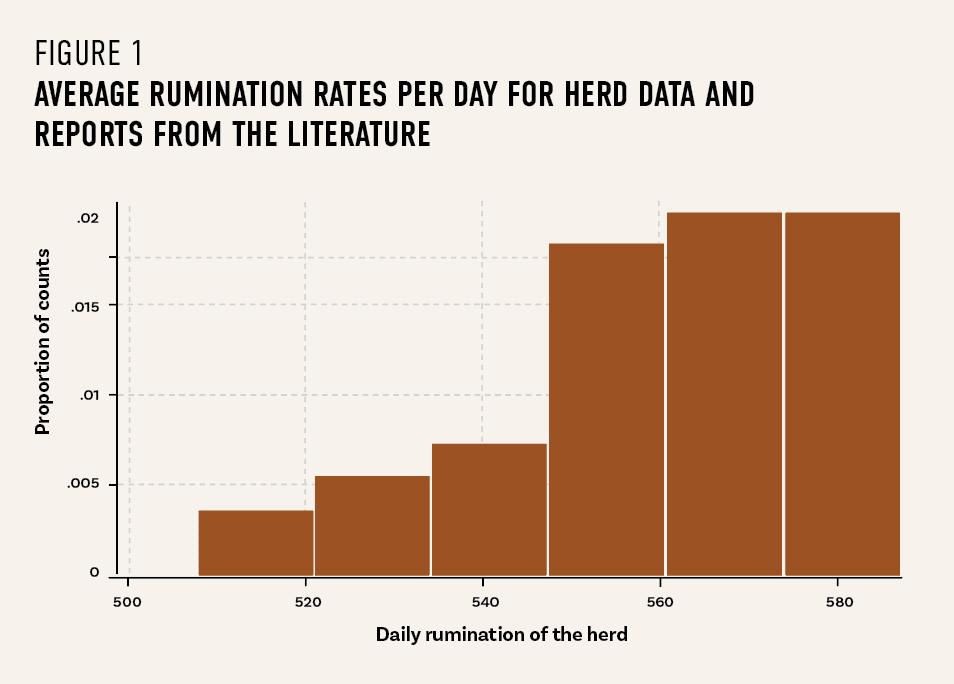 The following Figure 1 provides estimates of rumination rates obtained from some of the herds I work with and from the literature to give an indication of expected rates.
The following Figure 1 provides estimates of rumination rates obtained from some of the herds I work with and from the literature to give an indication of expected rates.
Use of these data will be enhanced by using the information from the wearables with other observations, e.g. environmental conditions (heat, cold rain) with milk production data, body temperature, weight change and body condition score.
On its own, rumination data is unlikely to be precise about many of the conditions it can help detect. A key application is that decreases in rumination rate are associated with metabolic diseases (subclinical milk fever, subclinical ketosis), retained placenta, metritis, mastitis and lameness. A difference of 70 below herd mates in rumination rate after calving was associated with disease incidence, and cows with low rumination before calving were more prone to disorder. Further, lower rumination rates after calving have been associated with lower production. Changes in rumination with calving onset provide an alert for calving. The rumination data are a non-specific but useful tool for screening for disorders.
Figure 2 shows the distribution of mean daily rumination rates for a herd for 40 days during a period with some heat stress, and heat does reduce rumination rates.
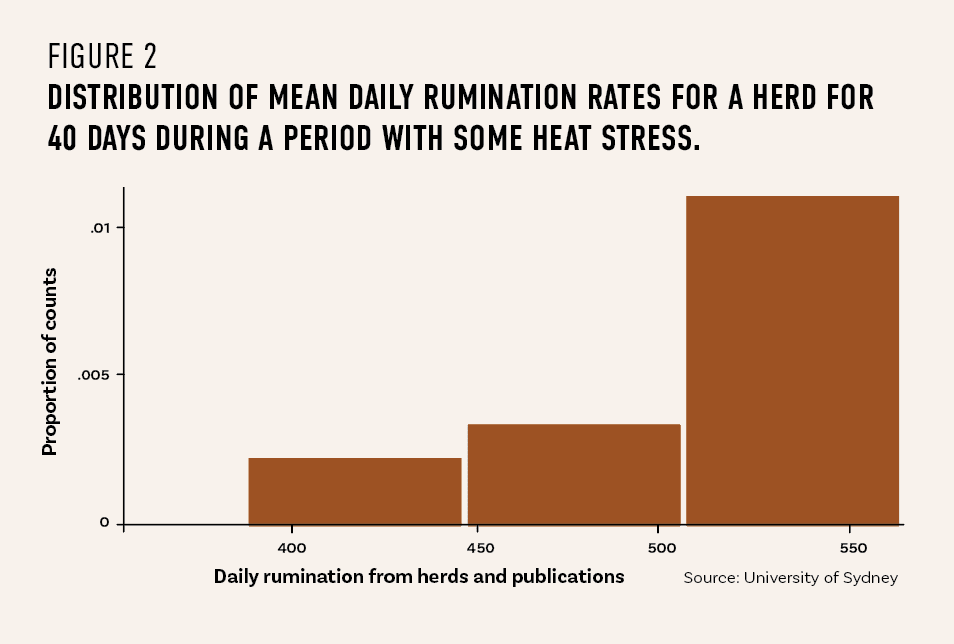 One of the conditions that wearables may help detect is ruminal acidosis. As New Zealand intensifies dairy production, ruminal acidosis will become more important to understand, however, this is a condition that occurs on pastures and crops, especially beets, alone.
One of the conditions that wearables may help detect is ruminal acidosis. As New Zealand intensifies dairy production, ruminal acidosis will become more important to understand, however, this is a condition that occurs on pastures and crops, especially beets, alone.
Ruminal acidosis occurs as a continuum of disorders, stemming from ruminal dysfunction and disorders of metabolism, of varying severity. The condition has a marked temporal dynamic expression, resulting in cases expressing quite different rumen concentrations of volatile fatty acids, lactic acid, ammonia, and rumen pH over time. Clinical ruminal acidosis is an important condition of cattle and subclinical ruminal acidosis (SRA) is very prevalent in many dairy populations, with estimates between 10% and 26% of cows in early lactation, but unlikely to be this high in pasture-only systems unless crop is fed.
The challenge for farmers and their advisors will be to make use of the extremely useful potential of wearable systems. This will not just require good stockmanship, but increasingly sophisticated statistics (often integrated into the software) and artificial intelligence. As the price reduces, many farms will benefit from the use of these technologies.


